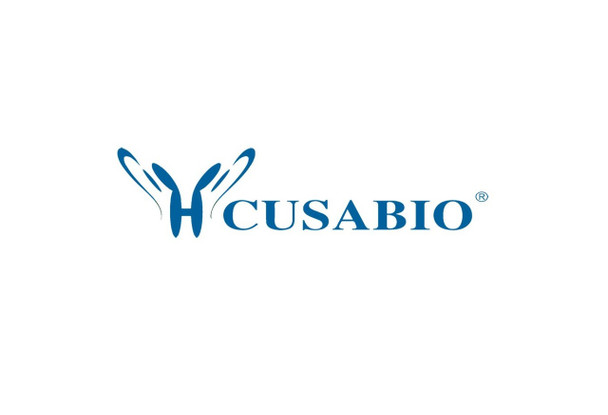Cusabio Human Recombinants
Recombinant Human Antiviral innate immune response receptor RIG-I (DDX58), partial | CSB-EP006638HU
- SKU:
- CSB-EP006638HU
- Availability:
- 3 - 7 Working Days
Description
Recombinant Human Antiviral innate immune response receptor RIG-I (DDX58), partial | CSB-EP006638HU | Cusabio
Alternative Name(s): DEAD box protein 58RIG-I-like receptor 1 ;RLR-1Retinoic acid-inducible gene 1 protein ;RIG-1Retinoic acid-inducible gene I protein ;RIG-I
Gene Names: DDX58
Research Areas: Immunology
Organism: Homo sapiens (Human)
AA Sequence: MTTEQRRSLQAFQDYIRKTLDPTYILSYMAPWFREEEVQYIQAEKNNKGPMEAATLFLKFLLELQEEGWFRGFLDALDHAGYSGLYEAIESWDFKKIEKLEEYRLLLKRLQPEFKTRIIPTDIISDLSECLINQECEEILQICSTKGMMAGAEKLVECLLRSDKENWPKTLKLALEKERNKFSELWIVEKGIKDVETEDLEDKMETSDIQIFYQEDPECQNLSENSCPPSEVSDTNLYSPFKPRNYQLELALPAMKGKNTIICAPTGCGKTFVSLLICEHHLKKFPQGQKGKVVFFANQIPVYEQQKSVFSKYFERHGYRVTGISGATAENVPVEQIVENNDIIILTPQILVNNLKKGTIPSLSIFTLMIFDECHNTSKQHPYNMIMFNYLDQKLGGSSGPLPQVIGLTASVGVGDAKNTDEALDYICKL
Source: E.coli
Tag Info: N-terminal 6xHis-tagged
Expression Region: 1-430aa
Sequence Info: Partial
MW: 53.3 kDa
Purity: Greater than 90% as determined by SDS-PAGE.
Relevance: Innate immune receptor which acts as a Cytoplasmic domain sensor of viral nucleic acids and plays a major role in sensing viral infection and in the activation of a cascade of antiviral responses including the induction of type I interferons and proinflammatory cytokines. Its ligands include: 5'-triphosphorylated ssRNA and dsRNA and short dsRNA (<1 kb in length). In addition to the 5'-triphosphate moiety, blunt-end base pairing at the 5'-end of the RNA is very essential. Overhangs at the non-triphosphorylated end of the dsRNA RNA have no major impact on its activity. A 3'overhang at the 5'triphosphate end decreases and any 5'overhang at the 5' triphosphate end abolishes its activity. Upon ligand binding it associates with mitochondria antiviral signaling protein (MAVS/IPS1) which activates the IKK-related kinases: TBK1 and IKBKE which phosphorylate interferon regulatory factors: IRF3 and IRF7 which in turn activate transcription of antiviral immunological genes, including interferons (IFNs); IFN-alpha and IFN-beta. Detects both positive and negative strand RNA viruses including mbers of the families Paramyxoviridae: Human respiratory syncytial virus and measles virus (MeV), Rhabdoviridae: vesicular stomatitis virus (VSV), Orthomyxoviridae: influenza A and B virus, Flaviviridae: Japanese encephalitis virus (JEV), hepatitis C virus (HCV), dengue virus (DENV) and west Nile virus (WNV). It also detects rotavirus and reovirus. Also involved in antiviral signaling in response to viruses containing a dsDNA genome such as Epstein-Barr virus (EBV). Detects dsRNA produced from non-self dsDNA by RNA polymerase III, such as Epstein-Barr virus-encoded RNAs (EBERs). May play important roles in granulocyte production and differentiation, bacterial phagocytosis and in the regulation of cell migration
Reference: DNA sequence and analysis of human chromosome 9.Humphray S.J., Oliver K., Hunt A.R., Plumb R.W., Loveland J.E., Howe K.L., Andrews T.D., Searle S., Hunt S.E., Scott C.E., Jones M.C., Ainscough R., Almeida J.P., Ambrose K.D., Ashwell R.I.S., Babbage A.K., Babbage S., Bagguley C.L. , Bailey J., Banerjee R., Barker D.J., Barlow K.F., Bates K., Beasley H., Beasley O., Bird C.P., Bray-Allen S., Brown A.J., Brown J.Y., Burford D., Burrill W., Burton J., Carder C., Carter N.P., Chapman J.C., Chen Y., Clarke G., Clark S.Y., Clee C.M., Clegg S., Collier R.E., Corby N., Crosier M., Cummings A.T., Davies J., Dhami P., Dunn M., Dutta I., Dyer L.W., Earthrowl M.E., Faulkner L., Fleming C.J., Frankish A., Frankland J.A., French L., Fricker D.G., Garner P., Garnett J., Ghori J., Gilbert J.G.R., Glison C., Grafham D.V., Gribble S., Griffiths C., Griffiths-Jones S., Grocock R., Guy J., Hall R.E., Hammond S., Harley J.L., Harrison E.S.I., Hart E.A., Heath P.D., Henderson C.D., Hopkins B.L., Howard P.J., Howden P.J., Huckle E., Johnson C., Johnson D., Joy A.A., Kay M., Keenan S., Kershaw J.K., Kimberley A.M., King A., Knights A., Laird G.K., Langford C., Lawlor S., Leongamornlert D.A., Leversha M., Lloyd C., Lloyd D.M., Lovell J., Martin S., Mashreghi-Mohammadi M., Matthews L., McLaren S., McLay K.E., McMurray A., Milne S., Nickerson T., Nisbett J., Nordsiek G., Pearce A.V., Peck A.I., Porter K.M., Pandian R., Pelan S., Phillimore B., Povey S., Ramsey Y., Rand V., Scharfe M., Sehra H.K., Shownkeen R., Sims S.K., Skuce C.D., Smith M., Steward C.A., Swarbreck D., Sycamore N., Tester J., Thorpe A., Tracey A., Tromans A., Thomas D.W., Wall M., Wallis J.M., West A.P., Whitehead S.L., Willey D.L., Williams S.A., Wilming L., Wray P.W., Young L., Ashurst J.L., Coulson A., Blocker H., Durbin R.M., Sulston J.E., Hubbard T., Jackson M.J., Bentley D.R., Beck S., Rogers J., Dunham I.Nature 429:369-374(2004)
Storage: The shelf life is related to many factors, storage state, buffer ingredients, storage temperature and the stability of the protein itself. Generally, the shelf life of liquid form is 6 months at -20?/-80?. The shelf life of lyophilized form is 12 months at -20?/-80?.
Notes: Repeated freezing and thawing is not recommended. Store working aliquots at 4? for up to one week.
Function: Innate immune receptor which acts as a cytoplasmic sensor of viral nucleic acids and plays a major role in sensing viral infection and in the activation of a cascade of antiviral responses including the induction of type I interferons and proinflammatory cytokines. Its ligands include
Involvement in disease: Singleton-Merten syndrome 2 (SGMRT2)
Subcellular Location: Cytoplasm, Cell projection, ruffle membrane, Cytoplasm, cytoskeleton, Cell junction, tight junction
Protein Families: Helicase family, RLR subfamily
Tissue Specificity: Present in vascular smooth cells (at protein level).
Paythway: NF-kappaBsignalingpathway
Form: Liquid or Lyophilized powder
Buffer: If the delivery form is liquid, the default storage buffer is Tris/PBS-based buffer, 5%-50% glycerol. If the delivery form is lyophilized powder, the buffer before lyophilization is Tris/PBS-based buffer, 6% Trehalose, pH 8.0.
Reconstitution: We recommend that this vial be briefly centrifuged prior to opening to bring the contents to the bottom. Please reconstitute protein in deionized sterile water to a concentration of 0.1-1.0 mg/mL.We recommend to add 5-50% of glycerol (final concentration) and aliquot for long-term storage at -20?/-80?. Our default final concentration of glycerol is 50%. Customers could use it as reference.
Uniprot ID: O95786
HGNC Database Link: HGNC
UniGene Database Link: UniGene
KEGG Database Link: KEGG
STRING Database Link: STRING
OMIM Database Link: OMIM









